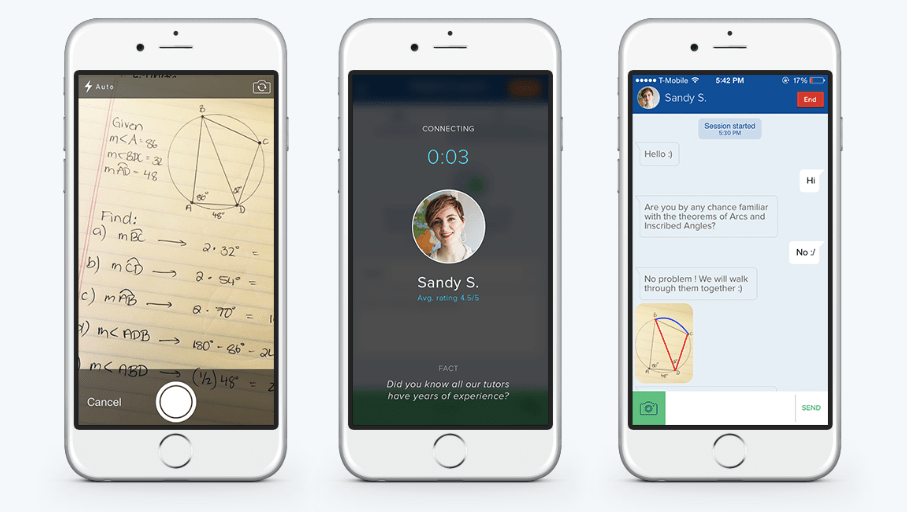With $3.5M In Funding, MathCrunch Wants To Provide Mobile Tutoring For High School And College Students

It’s tough to find a good tutor, and it’s even tougher to find a good tutor on short notice. MathCrunch is trying to change that, with a mobile app that provides on-demand tutoring for students at a low price. To pursue that goal, the company has raised $3.5 million in seed funding to expand and reach new users.
MathCrunch* hopes to provide a mobile marketplace that will enable students seeking help with their math problems to be matched with tutors who can guide them through the process and teach users how to solve them. The platform leverages two big trends taking place today: The first is the move to mobile messaging, and the second is the ability to enable on-demand connections with folks who have specialized knowledge and spare time on their hands.
In the case of MathCrunch, that means finding university students and teachers with knowledge of various different math subjects — like algebra, calculus, geometry, and the like — and pairing them with people who need help with specific problem sets. Students take a photo of the problem set and submit it via mobile app, and then the tutor opens up a chat session to help work them through the solution.
Students are charged by the minute, and can either purchase minutes or earn them by referring friends or sharing the app with friends in their social feeds. In doing so, MathCrunch is not only providing a way for students to get free or cheap tutoring, but it’s also creating a sort of viral loop that brings other users onto the platform.
Users can also purchase minutes, starting at $12 for 30 minutes of tutoring, $22 for 60 minutes, or $40 for 120 minutes of tutoring help. Tutors, meanwhile, get paid by the minute for the help they provide and can make themselves available at any time.
MathCrunch does the work of pre-vetting tutors by having them do a math test and then putting them through a 30-minute chat session with a senior tutor. Like other two-sided marketplaces, tutors are also evaluated based on the ratings provided by the students they help out.
While relatively new, the platform has had more than 100,000 successful tutoring sessions and has raised $3.5 million in funding from investors that include Floodgate Fund, Formation 8, Index Ventures, Sherpa Ventures, and Slow Ventures.
While it’s still early days, the company hopes to add new services and potentially add new pricing models, including a subscription service that would provide users with an unlimited number of chat sessions for a limited amount of time.
Comments
Post a Comment